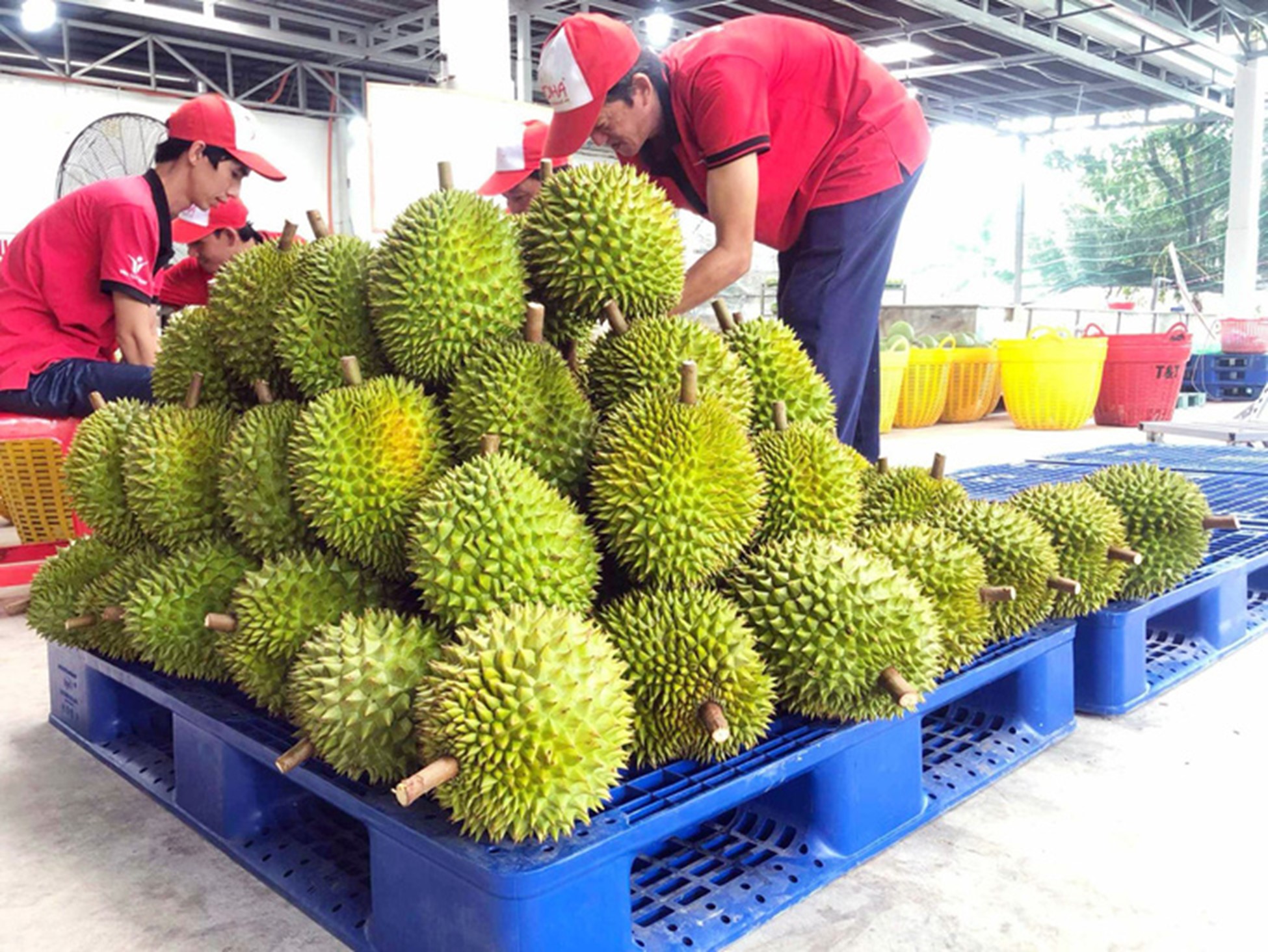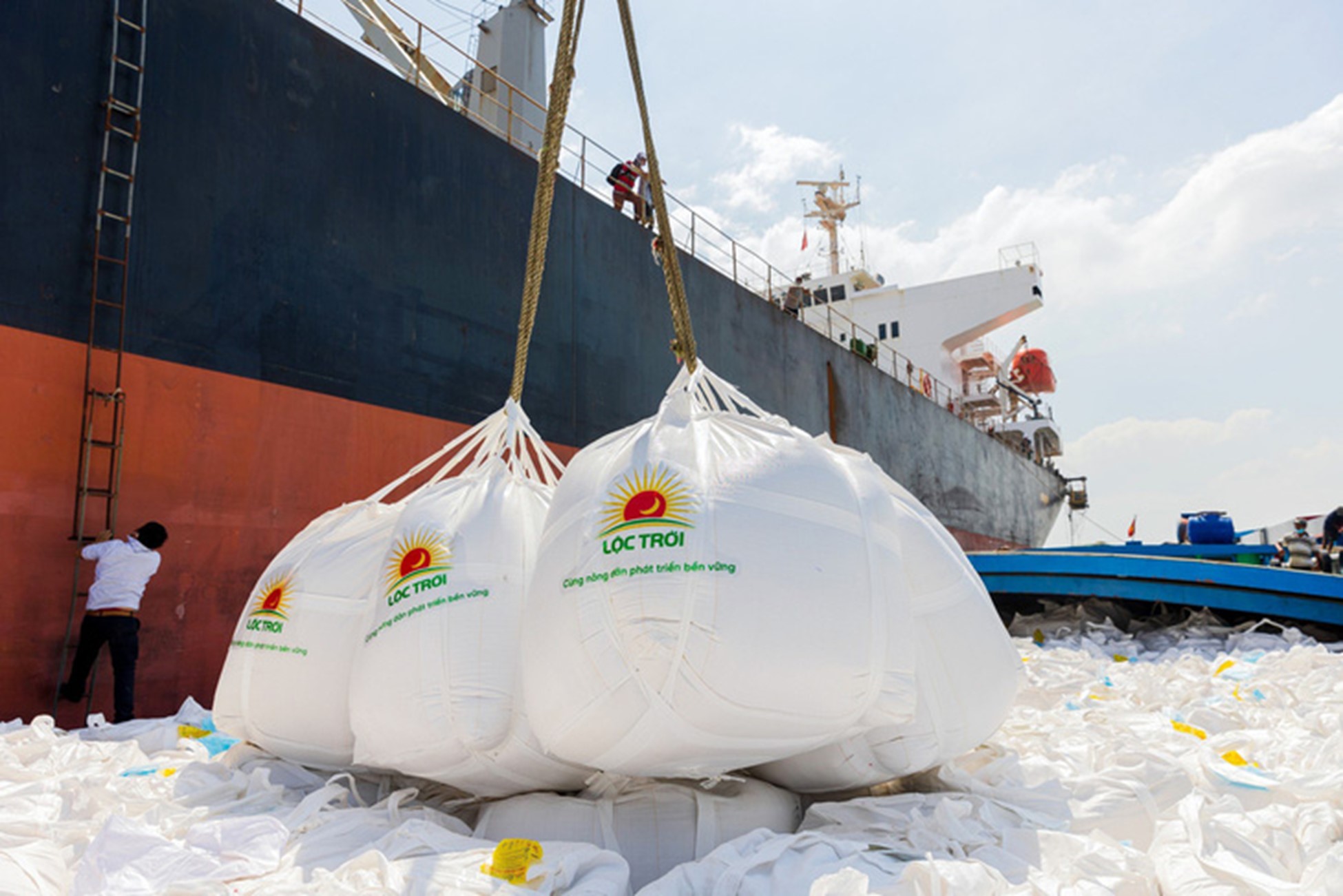Agricultural produce remains Vietnam’s key export earner with various products seeing their export volume and prices surging in the first quarter of this year.
Forecasts suggest that other markets’ demands for Vietnamese agricultural products will increase further due to abundant supplies and stable prices, while many other countries are facing inflation.
In the first three months of this year, durian exports fetched US$254 million, soaring 66 percent year on year, according to the Ministry of Agriculture and Rural Development.
Durian shipments to China accounted for up to 98 percent of Vietnam’s durian exports in the period.
Thus, Vietnam overtook Thailand to become the largest exporter of durians to the northern neighbor.
Vietnam made up over 60 percent of the total market share for durians in China, well above the 32 percent in 2023.
In the last two years, Vietnam’s durians have made enormous strides in the neighboring market.
Vietnam can maintain its position as the top supplier of durians to China thanks to an abundant output, the availability of durians all year round, short transport time, and competitive prices.
Vietnam’s coffee exports are also enjoying a boom.
The Ministry of Agriculture and Rural Development revealed that the country shipped 800,000 metric tons of coffee worth nearly $1.9 billion abroad in January-March, skyrocketing 44.4 and 54.2 percent, respectively, over the same period last year.
With current coffee prices, local experts predicted Vietnam’s coffee exports at $5 billion this year.
According to local coffee exporters, this would be the highest coffee export value in the recent past.
Germany took the lead in importing coffee from Vietnam, followed by Italy and Spain.
At present, Vietnam’s coffee exports are priced at around $4,000 per metric ton. In the domestic market, the coffee price has reached a new record high of over VND110,000 ($4.3) per kilogram.
According to experts, the coffee export value target of $5 billion this year is achievable with the current prices.
Vietnam’s bananas have also cemented their position in the Chinese market. Vietnam has sent banana batches to the northern neighbor via official channels since 2023 and the banana export volume is on the rise.
To avoid depending on one single market, Vietnamese enterprises have penetrated other markets, such as South Korea, Hong Kong, and Japan.
All fresh bananas on sale at over 90 AEON stores in Hong Kong were imported from Vietnam, as they have replaced the fruit supplied by Taiwan, Singapore, and the Philippines,
Rice also contributed significantly to Vietnam’s farm produce exports.
Vietnamese rice is preferred in many markets.
In the first quarter of this year, Vietnam exported 2.07 million metric tons of rice valued at $1.37 billion, up 12 and 40 percent, respectively, over the year-ago period.
Vietnam is currently among the three largest rice exporters in the world, representing 15 percent of the worldwide rice supply.
If local rice production remains stable and India’s rice export restriction continues, Vietnam’s rice exports will be promising in the remaining months of the year.
Seafood exports also made progress in the three-month period with a value of nearly $1.9 billion, inching up 2 percent.
Vietnam’s seafood is now being shipped to 170 countries and territories.
Among the 15 buyers of Vietnam’s seafood, Japan, the U.S., and China were major markets.
|
|
| Vietnam's rice is prefered in many foreign markets. Photo: L.T. / Tuoi Tre |
Maintaining sustainable export growth
The positive export results have opened up great opportunities for both local farmers and enterprises. They should take advantage of these chances and promote their strengths to contribute to the sector’s development.
Nguyen Quang Nam, a durian trader in Hanoi, said Vietnam’s durian farming area has increased sharply over the past five years. However, the country should grasp opportunities in a sustainable manner.
To improve Vietnam’s durian value, the sector needs to establish high-quality farms and follow regulations and criteria regarding food safety and phytosanitary certification.
As for bananas, Vietnam has had certain advantages as China’s banana farming areas have been scaled down due to rising input, land lease, and labor costs.
Vo Quan Huy, director of Huy Long An Co. Ltd., a banana exporter, expressed optimism regarding the current favorable conditions for banana exports.
Nevertheless, he emphasized the importance of adhering to standards specific to target markets to ensure placement on the shelves of distributors in those regions.
As for coffee exports, Nguyen Nam Hai, chairman of the Vietnam Coffee - Cocoa Association, said there is a need to build national brands.
Coffee is a key export commodity which fetches billions of U.S. dollars but Vietnam still lacks a national coffee brand, Hai added.
As a major rice exporter, Loc Troi Group has ceaselessly negotiated and entered into agreements to supply rice to partners, said Nguyen Duy Thuan, director of the group.
The company has partnered with over 200,000 farmers to cultivate rice across 300,000 hectares, ensuring a steady rice supply for the global market.
"We presently operate 10 rice plants with a total capacity of two million metric tons annually, guaranteeing supply to 40 countries worldwide," Thuan elaborated.
He suggested building Vietnam’s rice brands in other markets, especially Europe.
According to the Vietnam Food Association, Vietnam’s rice has to compete fiercely with grains from Thailand and Pakistan, which forces the country to improve its rice quality and boost trade promotion activities to expand markets.
Like us on Facebook or follow us on Twitter to get the latest news about Vietnam!


















































